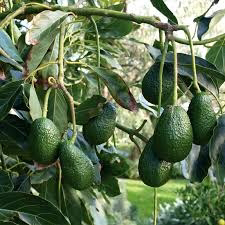Establishing a Successful blood orange farm
- Get link
- X
- Other Apps
Establishing a successful blood orange farm requires careful planning and adherence to certain agricultural practices. Here are the key
Climate and Soil Conditions
Climate
Blood oranges thrive in subtropical to Mediterranean climates. They require a distinct winter chilling period for fruit coloration. Areas with warm days and cool nights are ideal.
Soil
Well-draining soil with a slightly acidic to neutral pH (6.0-7.5) is preferable. Sandy-loam or loamy soils are suitable for blood orange cultivation.
Site Selection
Choose a site with good air circulation to minimize the risk of diseases.
Ensure the site has access to full sunlight, as blood oranges require plenty of sunlight for fruit development.
Variety Selection
Select appropriate blood orange varieties based on your climate and market demand. Popular varieties include Moro, Tarocco, and Sanguinello.
Planting
Plant blood orange trees during the recommended planting season, usually in late winter or early spring.
Maintain proper spacing between trees to allow for good airflow and sunlight penetration.
Irrigation
Blood oranges require regular irrigation, especially during dry periods. Drip irrigation systems are often used to provide consistent moisture.
Fertilization
Conduct a soil test to determine nutrient levels and fertilize accordingly. Blood orange trees generally benefit from balanced fertilizers with micronutrients.
Pruning
Prune blood orange trees to shape and remove dead or diseased wood. Proper pruning encourages sunlight penetration and air circulation.
Pest and Disease Management
Implement integrated pest management (IPM) practices to control pests like citrus psyllids and diseases such as citrus canker.
Monitor the orchard regularly for signs of pests and diseases.
Kindly contact us on for seedlings
0708729144
WhatsApp using this link
https://wa.me/256708729144
https://wa.me/c/256708729144
Climate and Soil Conditions
Climate
Blood oranges thrive in subtropical to Mediterranean climates. They require a distinct winter chilling period for fruit coloration. Areas with warm days and cool nights are ideal.
Soil
Well-draining soil with a slightly acidic to neutral pH (6.0-7.5) is preferable. Sandy-loam or loamy soils are suitable for blood orange cultivation.
Site Selection
Choose a site with good air circulation to minimize the risk of diseases.
Ensure the site has access to full sunlight, as blood oranges require plenty of sunlight for fruit development.
Variety Selection
Select appropriate blood orange varieties based on your climate and market demand. Popular varieties include Moro, Tarocco, and Sanguinello.
Planting
Plant blood orange trees during the recommended planting season, usually in late winter or early spring.
Maintain proper spacing between trees to allow for good airflow and sunlight penetration.
Irrigation
Blood oranges require regular irrigation, especially during dry periods. Drip irrigation systems are often used to provide consistent moisture.
Fertilization
Conduct a soil test to determine nutrient levels and fertilize accordingly. Blood orange trees generally benefit from balanced fertilizers with micronutrients.
Pruning
Prune blood orange trees to shape and remove dead or diseased wood. Proper pruning encourages sunlight penetration and air circulation.
Pest and Disease Management
Implement integrated pest management (IPM) practices to control pests like citrus psyllids and diseases such as citrus canker.
Monitor the orchard regularly for signs of pests and diseases.
Kindly contact us on for seedlings
0708729144
WhatsApp using this link
https://wa.me/256708729144
https://wa.me/c/256708729144
https://bwebajjafruittree.com
- Get link
- X
- Other Apps



Comments
Post a Comment